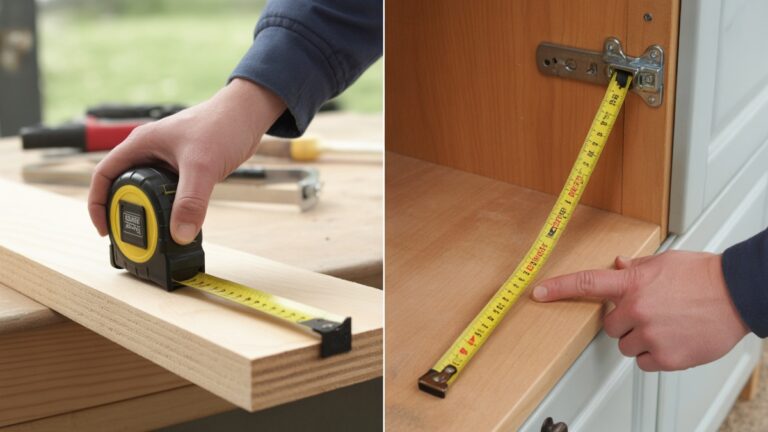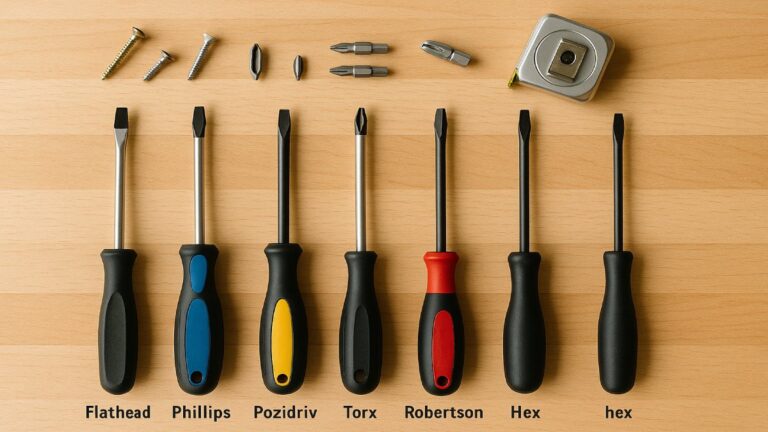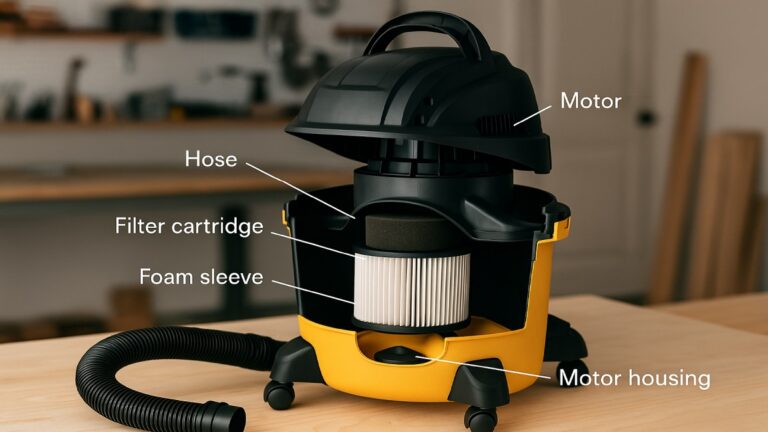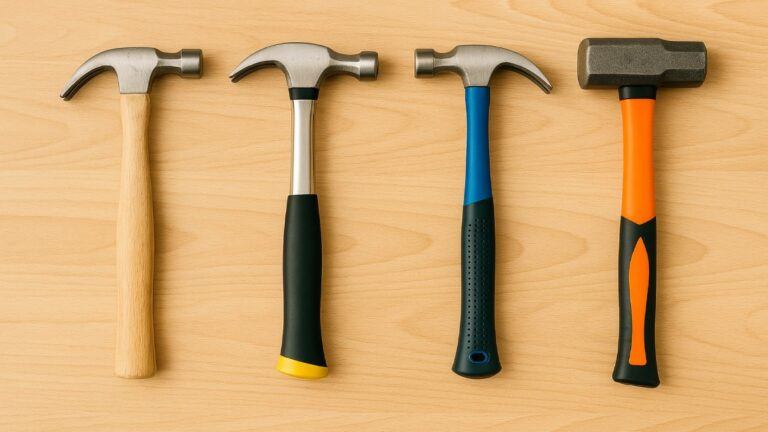How to Choose the Right Saw Blade Tooth Count
Find out how to pick the perfect saw blade tooth count for clean, precise cuts—no matter what material or saw you use.
Every cut you make with a table saw, miter saw, or circular saw depends heavily on one overlooked factor—your blade’s tooth count. The number of teeth on a saw blade affects how fast you can cut, how smooth the edge will be, and how long the blade itself will last. Whether you’re cutting hardwood, laminate, or aluminum trim, understanding tooth count helps you achieve professional results without wasting time or material.
In this complete guide, you’ll learn how tooth count interacts with blade geometry, kerf thickness, and hook angle. We’ll break down which counts work best for each material, how to avoid common cutting mistakes, and how to extend your blade’s lifespan. By the end, you’ll be able to match blade design to every woodworking or DIY project with confidence.
What Tooth Count Really Means
Tooth count is the total number of cutting teeth around the blade’s circumference. It controls how quickly the material is removed and how smooth the finished edge appears. A low-tooth-count blade has larger gullets and removes material aggressively, while a high-tooth-count blade takes smaller bites for a cleaner finish. For example, a 24-tooth rip blade powers through solid wood quickly, while an 80-tooth crosscut blade creates a glass-smooth edge on plywood.
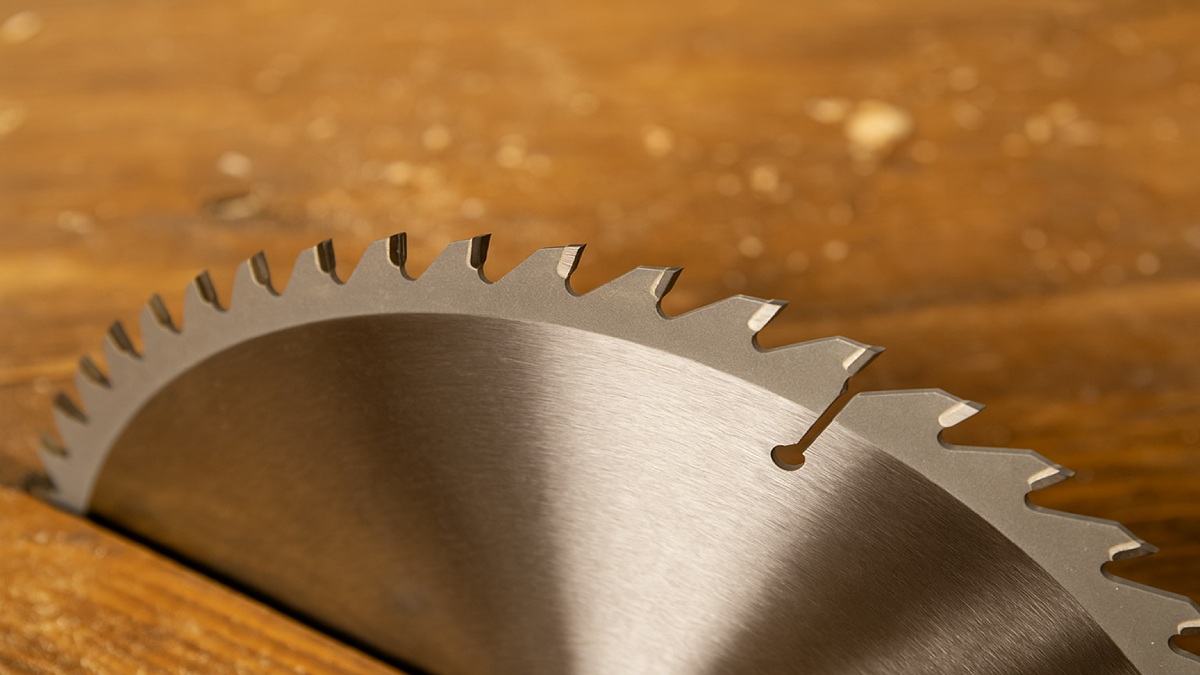
Balancing Speed and Smoothness
Fewer teeth mean faster feed rates and coarser cuts; more teeth produce smoother finishes but require slower feeds. The secret lies in balancing the two. A general-purpose or combination blade—typically 40 to 50 teeth—offers the best middle ground for hobbyists and small shops. Professionals often keep dedicated blades for ripping (24T) and crosscutting (60-80T) to maximize efficiency and surface quality.
Another concept to consider is chip load—the amount of material each tooth removes. The right chip load prevents overheating and burning. Too few teeth or too fast a feed rate can leave rough edges; too many teeth at high speed can scorch wood or cause resin buildup.
How Material Type Affects Blade Selection
Every material behaves differently under the saw. Hard maple demands power and deep gullets, while melamine chips easily and needs more teeth for support. Matching tooth count and geometry to the material ensures cleaner results, less waste, and longer blade life.

Ripping Hardwood or Softwood
When ripping along the grain, use a 24-tooth to 30-tooth flat-top grind (FTG) blade. The flat teeth act like small chisels, removing long shavings efficiently. Wider gullets clear sawdust quickly, preventing burn marks and keeping the cut line straight. A positive hook angle around 15° helps feed material smoothly without forcing.
Crosscutting for Fine Finish
Crosscuts cut across the wood grain, where fibers tend to tear. A 60-to-80-tooth alternate-top bevel (ATB) blade shears fibers cleanly for polished results. These blades are ideal for trim, molding, and furniture projects. Feed slower and let the blade do the work to avoid splintering.
Plywood, MDF, and Laminate Sheets
Engineered sheet goods like MDF or melamine have hard surfaces that chip easily. For these materials, use an 80-to-100-tooth triple-chip grind (TCG) or high-ATB blade. TCG alternates flat and trapezoidal teeth, balancing durability and precision. Pair your blade with a zero-clearance insert to reduce tear-out along the cut line.
Non-Ferrous Metals
When cutting aluminum, brass, or copper trim, use a TCG blade with 60-to-100 teeth. Secure the material, apply light lubricant, and maintain steady feed pressure. High tooth counts minimize burrs and ensure smoother edges without overheating the metal.
Blade Geometry and Tooth Design
Tooth count is only half the story. The shape of each tooth—known as blade geometry—determines how the blade interacts with the workpiece. Three main types dominate woodworking blades: FTG, ATB, and TCG.

FTG (Flat Top Grind)
FTG blades are designed for aggressive cutting along the grain. Each flat tooth removes a thick chip, and large gullets carry waste away quickly. This design is perfect for ripping boards or dimensioning rough lumber where finish quality matters less than speed.
ATB (Alternate Top Bevel)
ATB teeth alternate bevel angles to slice fibers from both directions. This shearing action minimizes splintering and creates crisp, polished cuts. ATB is the go-to for crosscutting solid wood and veneers.
TCG (Triple Chip Grind)
A TCG pattern alternates between a flat raker tooth and a trapezoidal scoring tooth. This combination resists dulling and excels on abrasive materials such as laminates, MDF, and non-ferrous metals. Though slightly slower than ATB, it leaves smooth edges and prolongs blade life.
Specialty and Combination Blades
A combination blade typically has 40–50 teeth arranged in small groups separated by deep gullets. These “all-purpose” designs handle both ripping and crosscutting in one blade—ideal for woodworkers who prefer convenience. Keep in mind that while they perform both tasks well, dedicated blades still deliver the cleanest results.
The Role of Hook Angle, Kerf, and Gullet Size
Three often-overlooked characteristics—hook angle, kerf thickness, and gullet size—directly affect how tooth count performs. Understanding their relationships helps fine-tune your blade choice.
Hook Angle
Hook angle measures how much the teeth lean forward or backward. A positive hook (10°–20°) makes the blade more aggressive, drawing the material into the cut quickly—perfect for ripping. A negative hook (–5°) slows feed rate, offering control on miter or radial-arm saws where safety and precision are priorities.
Kerf Thickness
Thin-kerf blades remove less material and demand less power, making them excellent for portable saws or smaller motors. However, they’re more prone to deflection. Full-kerf blades are thicker and sturdier, producing straighter cuts but requiring stronger motors. Always match kerf to your saw’s horsepower.
Gullet Size
The gullet—the space between teeth—collects chips and sawdust. Fewer teeth create larger gullets that carry waste faster, crucial for ripping. High-tooth blades have smaller gullets, which slow material removal but improve surface finish. Pairing the right gullet size with your material type ensures both speed and accuracy.
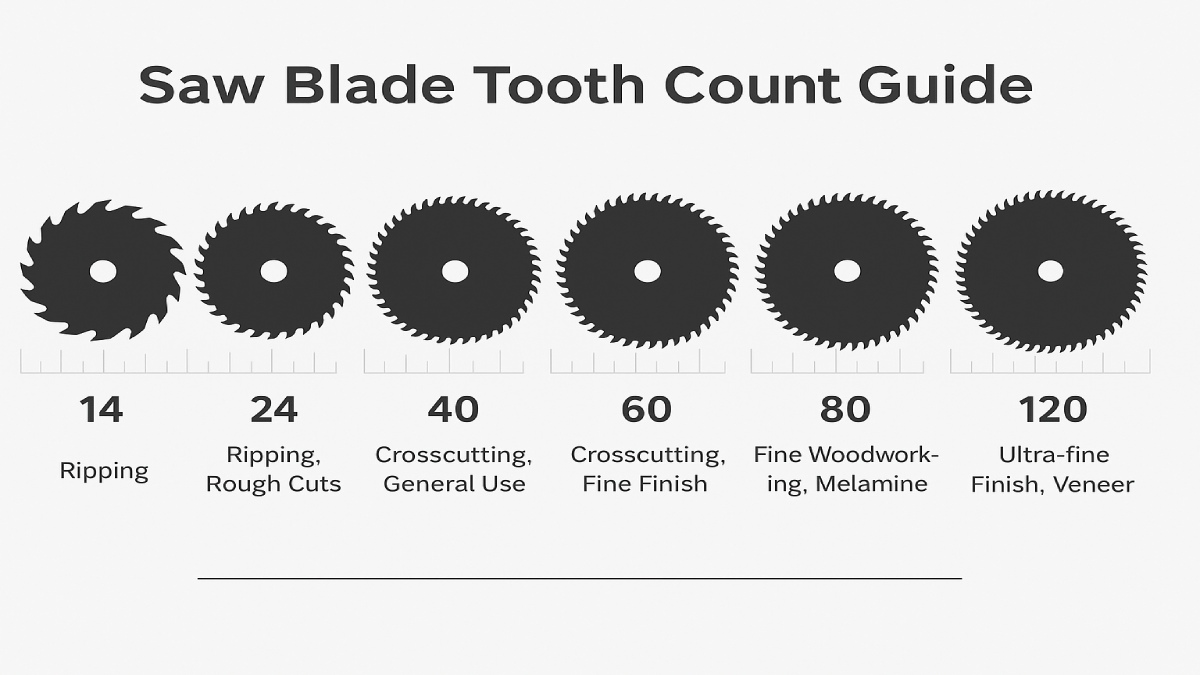
Matching Tooth Count to the Right Tool
Not every saw handles blades the same way. Your choice depends not only on what you cut but also on the tool you use.
Table Saws
Table saws excel at long, straight rips and precise crosscuts. For heavy ripping, use a 24-tooth FTG blade. For general woodworking, a 40-to-50-tooth combo blade offers versatility. For fine cabinetry, step up to 60-to-80 teeth for clean, glue-ready edges.
Miter Saws
Miter saws benefit from high-tooth-count blades—typically 80–100 teeth—with a negative hook angle for better control. The slower feed and fine teeth make them perfect for cutting molding, trim, and delicate finishes without splintering.
Circular Saws
For portable circular saws, balance speed and portability with thin-kerf 24-to-40-tooth blades. Use fewer teeth for rough framing lumber and higher counts for sheet goods or finish work.
Combination Blades and When They Make Sense
Combination blades save time for mixed projects. Their 40–50 teeth strike a balance between aggressive rips and smooth crosscuts. They’re perfect for small workshops or mobile contractors who prefer switching tasks without changing blades. Still, specialists recommend swapping blades for large production runs or demanding finishes.
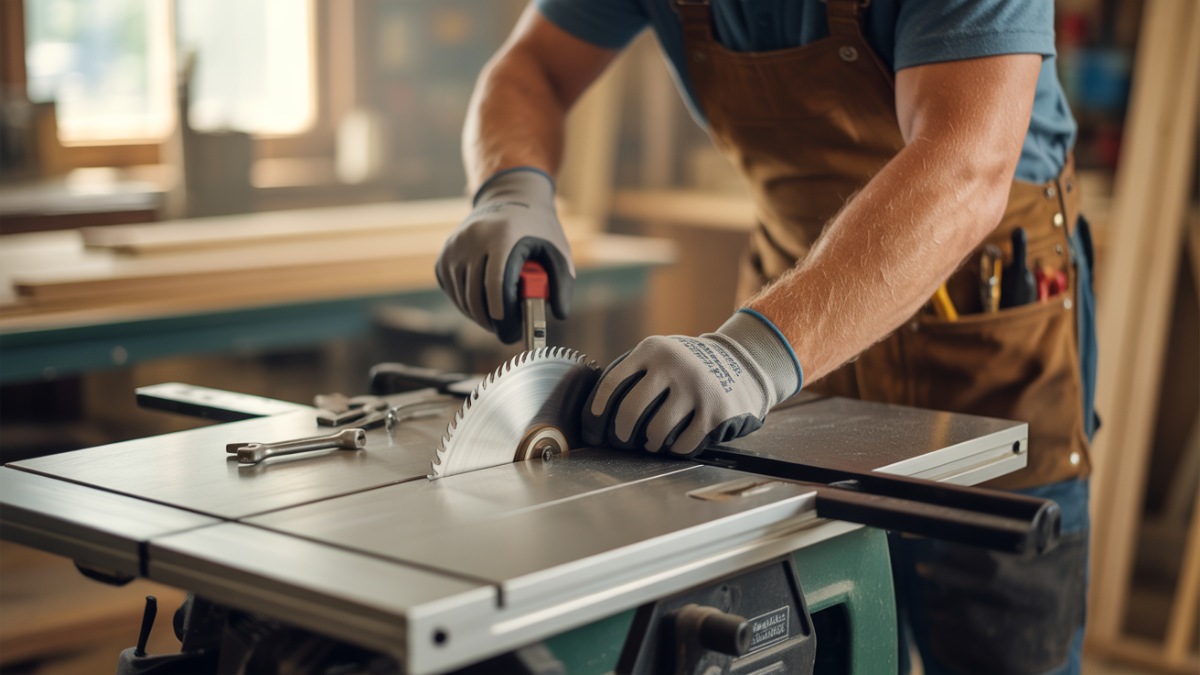
Common Problems and How Tooth Count Can Fix Them
Even a sharp blade can perform poorly if tooth count doesn’t match the task. Recognizing common issues and adjusting blade choice can solve them quickly.
Burning or Scorching
Burning occurs when the blade rubs instead of cuts. Common causes include too many teeth, dull edges, or feed rates that are too slow. Switching to a lower tooth count or cleaning resin buildup often fixes the issue.
Tear-Out and Rough Edges
Tear-out happens when wood fibers break away from the cut edge. To prevent it, use higher tooth counts with ATB geometry and support both sides of the cut using a zero-clearance insert. Maintain a steady feed for consistent contact.
Blade Deflection or Wobble
If cuts wander or edges feel uneven, the blade might be too thin for the saw’s power. Switch to a full-kerf version for rigidity and check alignment. Keep arbor flanges clean to ensure the blade seats flat against the saw’s arbor.
Pro Tips for Extending Blade Life
A well-maintained blade saves money and ensures accuracy. Clean your blade regularly using resin remover to prevent buildup that increases heat and dulls teeth. Store blades vertically on pegs or in padded cases to avoid warping. Use the correct feed rate—too slow causes friction, while too fast strains teeth. Finally, sharpen carbide-tipped blades after roughly 1,000–2,000 feet of cutting for maximum lifespan.
FAQs About Saw Blade Tooth Count
What is the best all-purpose saw blade tooth count?
A 40-to-50-tooth combination blade balances speed and smoothness for general woodworking. It’s a great option if you want to handle both ripping and crosscutting without switching blades.
How do I know when to replace a blade?
Look for signs like burning, vibration, or extra resistance. If cuts require more effort or show rough fibers, it’s time to sharpen or replace your blade.
Does tooth count affect safety?
Yes. Blades with too aggressive a hook or too few teeth can grab material and kick back. Always match tooth count and geometry to your saw type and feed method.
Can one blade handle both ripping and crosscutting?
Yes—combination blades do both tasks fairly well, but for the smoothest finish, dedicated blades are still best. Keep one rip and one crosscut blade handy for professional-grade results.
Conclusion: Finding Your Perfect Blade Match
Saw blade tooth count is a simple number that carries big impact. Each tooth removes material differently, influencing speed, cut quality, and tool strain. Start by identifying what you cut most often—solid wood, sheet goods, or metal—and select the right count and geometry from there. Ripping blades with fewer teeth keep production fast, while high-count crosscut blades deliver flawless finishes.
Experiment with setups, monitor feed rate and material response, and fine-tune your blade collection for every task. When your saw blade matches your work, cutting becomes smoother, safer, and far more satisfying—proof that precision starts with the right teeth.

